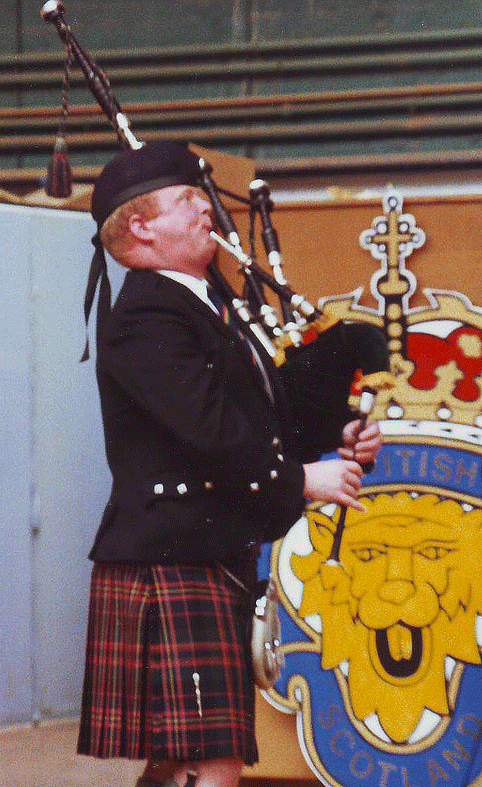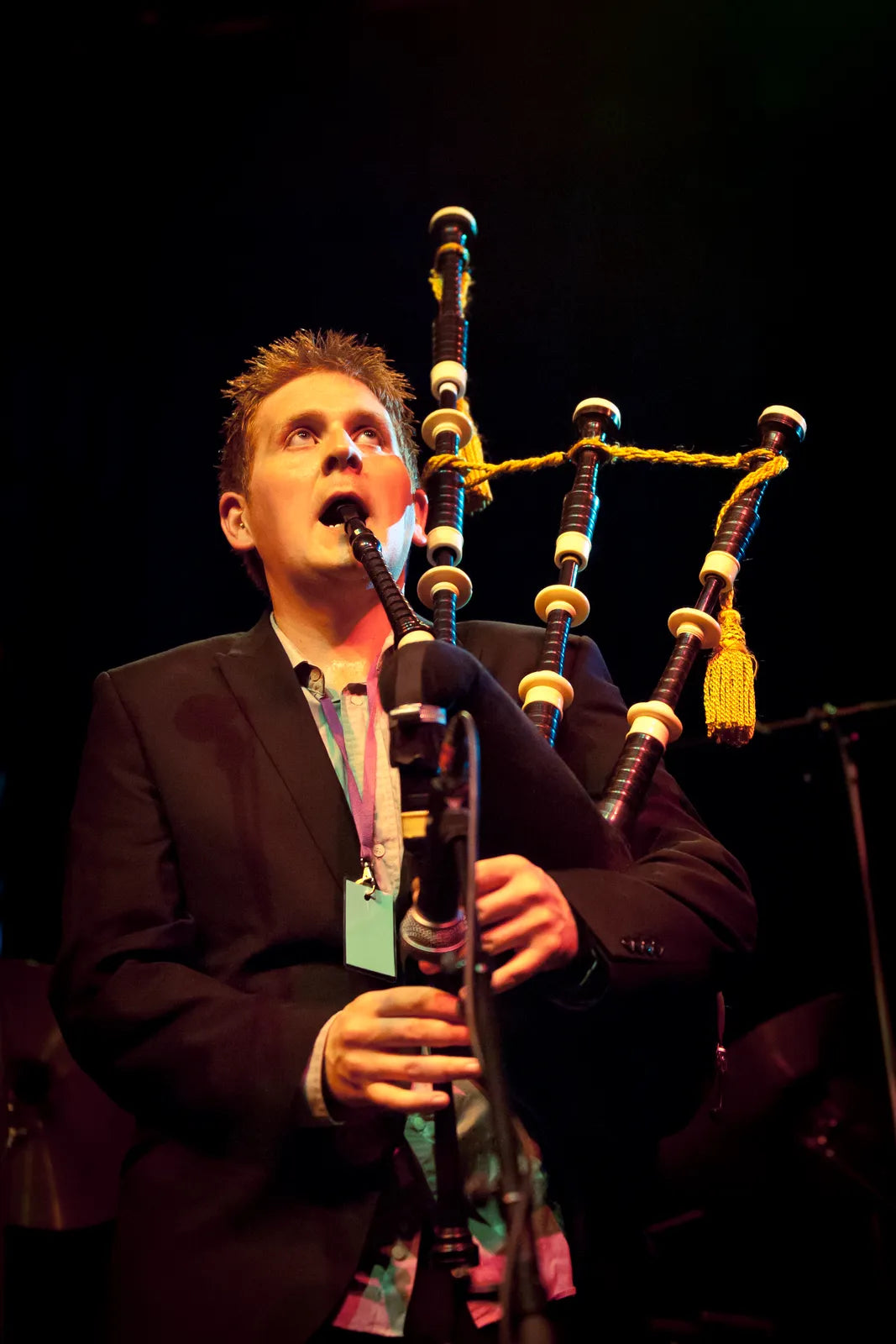Explore Bagpipers and Their Art, Attire & Impact - A Deep Dive into Tradition and Culture
by Marcus Harris on Nov 02, 2024
Table of Content
Bagpipers are more than musicians; they preserve a rich cultural heritage that echoes through Scotland and beyond. The bagpipe's sound evokes deep emotions, telling stories of joy, grief, and tradition. This iconic instrument symbolizes pride, loyalty, and community across various cultures. In exploring the world of bagpipers, we will examine their roles in celebrations, their attire, notable figures, the challenges they encounter, and the future of this beloved art form.
Who are bagpipers?
A bagpiper is a musician skilled in playing the bagpipes, an ancient woodwind instrument known for its unique sound. Although bagpipes originated in various cultures, they are closely linked to Scottish Highland music. The instrument consists of a bag that holds air and a reed system that produces sound.
Bagpipers use this traditional instrument to express emotions, from joy at weddings and parades to sorrow at memorials and funerals. Their versatility allows them to fit into many musical styles, including folk, classical, and contemporary. As they convey deep cultural stories, bagpipers become storytellers, sharing their communities' history and spirit through music.

The structure of the bagpipe.
To appreciate what makes bagpipers special, it's essential to recognize the complex design of their instrument. A typical bagpipe consists of several main parts:
The Bag : The core of the instrument, traditionally made from animal hide but now often using synthetic materials. It acts as an air reservoir for consistent airflow during play.
The Chanters : These melodic pipes produce sound and come in various keys, each offering different tonal qualities. Bagpipers often choose a chanter that suits their style.
Drones : Most bagpipes feature one or more drones that create a continuous note alongside the melodies played on the chanter. Drones enhance the overall sound and depth of the performance.
Understanding these components highlights the skill needed to master such a complex instrument, showcasing the dedication of bagpipers who spend years honing their craft.
Importance of Bagpipe Musicians in Cultural Events
Bagpipe musicians play a vital role in cultural celebrations worldwide, enhancing parades and events with their music.
- Weddings and Family Gatherings: At weddings, bagpipes create a festive atmosphere, marking the bride's entrance and adding romance. They also provide music for dancing and speeches, connecting families during reunions.
- Memorial Services and Funerals: Bagpipes are significant at funerals, honoring lives and comforting mourners. Their moving tunes inspire reflection and pay tribute to the departed, showcasing the instrument's emotional depth.
- National Holidays and Public Celebrations: In national events, especially in Scotland, bagpipe musicians are essential. Celebrations like Burns Night foster national pride, while parades energize crowds and create a sense of community. Events like the Edinburgh Festival Fringe highlight the importance of bagpipes in cultural exchange and contemporary art.

What does a bagpiper wear?
Classic Scottish attire.
Scottish bagpipers wear traditional Highland attire that reflects rich history and symbolism. The kilt, a knee-length tartan garment representing a family's clan, is the most notable piece. Each tartan pattern connects the wearer to their heritage.
Pipers also sport a sporran, a small waist pouch for personal items, which comes in various styles with detailed designs or fur accents.
For formal events, they may wear a doublet or Argyle jacket, along with a waistcoat and accessories like a bowtie. The outfit is completed with knee-high socks and ghillie brogues, blending functionality with formality in Scottish dress.
Differences in piping clothing by region.
Scottish attire is well-known, but bagpipers from other cultures wear distinctive outfits reflecting their traditions. For example, Irish pipers often sport military-inspired uniforms with practical and decorative elements.
In Eastern Europe, particularly in areas rich in folk traditions, pipers may don colorful embroidered shirts and trousers that showcase vibrant patterns representative of their culture. These outfits add visual appeal to their performances.
As bagpipe music evolves, so does the clothing of pipers, with some choosing modern takes on traditional styles. This mix of old and new allows them to express individuality while honoring their cultural heritage.
Practical factors for performers.
While aesthetics are important in a bagpiper's outfit, practicality is crucial. Playing the bagpipes requires clothing that allows for free movement, ensuring comfort during performances.
Many pipers opt for breathable fabrics, especially outdoors where temperatures can change. Footwear also needs to provide good support, making lightweight ghillie brogues a popular choice.
Ultimately, the attire of bagpipers reflects their dedication to tradition and artistry. By wearing their chosen garments, they honor their heritage while impressing audiences with their music.

Differences Between Traditional and Modern Bagpipe Players.
Classic bagpipe players.
Traditional bagpipe pipers closely follow classic repertoires, preserving folk tunes and historical compositions that reflect their community's heritage. They act as guardians of cultural continuity.
These pipers emphasize authenticity in their performances, using techniques specific to their regional styles. This dedication allows them to evoke a sense of history and nostalgia for listeners.
Moreover, traditional pipers often take part in community events and cultural festivals, strengthening societal bonds and bridging generational gaps through shared experiences.
Contemporary bagpipe musicians.
In contrast, modern bagpipe players embrace innovation and collaboration across genres. They blend elements from rock, pop, jazz, and electronic music, making bagpipe music more appealing to wider and younger audiences.
These pipers experiment with different instruments, arrangements, and technologies, using effects pedals and digital production to enhance their performances.
Additionally, they often collaborate with artists from various fields, expanding the reach of bagpipe music beyond traditional boundaries. This helps redefine the perception of bagpipes in contemporary music.
Closing the divide: Where tradition intersects with modernity.
Despite the differences between traditional and modern bagpipe players, there is a common ground where they connect. Many contemporary pipers value their heritage and incorporate traditional elements into their music.
By blending traditional melodies and techniques with modern compositions, these musicians create a link between the past and present, celebrating their roots while reaching a broader audience. This fusion enhances appreciation for bagpipe music overall.
Additionally, community events and competitions promote collaboration between traditional and modern pipers, creating opportunities for learning and growth. Workshops and festivals allow musicians from diverse backgrounds to exchange knowledge and skills, enriching the art form.
Renowned Bagpipe Players Across the Globe.
Fred Morrison.
Fred Morrison is a prominent figure in the bagpipe world, known for his innovative style and exceptional skill. From Scotland, he blends traditional Highland piping with various musical influences, creating compositions that range from emotional laments to energetic jigs.
Morrison is also committed to education, offering workshops and masterclasses to help aspiring pipers. He not only performs but also works to preserve traditional techniques while promoting creativity within the genre.

Alasdair Gillies.
Alasdair Gillies is a leading bagpipe piper known for his elegance and precision. His skill enables him to explore diverse musical styles while honoring tradition. He has impressed audiences globally through recordings, competitions, and performances.
In addition to his musicianship, Gillies actively supports the bagpipe community as a mentor to young pipers. Many musicians have been inspired by his commitment to excellence.

Stuart Liddell.
Stuart Liddell is known for his energetic playing and innovative compositions. A champion competitor, he has received many awards in top piping contests. He skillfully combines traditional tunes with fresh arrangements, enchanting audiences with his creativity.
Beyond performing, Liddell is dedicated to mentoring young pipers. Through teaching, he inspires passion and discipline in aspiring musicians, helping to keep the art of bagpiping alive.

Colin MacLellan.
Colin MacLellan is a respected bagpipe expert known for his performance and teaching. His competitive experience has earned him numerous championships, highlighting his skill and artistry.
He is dedicated to education, conducting workshops that inspire aspiring pipers to understand the instrument's complexities and appreciate its cultural significance.

Jack Lee.
Jack Lee is a prominent figure in the bagpipe community, known for his exceptional playing and contributions to the art. As a respected soloist and member of elite bands, he has significantly influenced competitive piping.
In addition to his mastery of the instrument, Lee is passionate about teaching, helping young musicians develop their creativity while adhering to traditional techniques.

Brian Donaldson.
Brian Donaldson is recognized as a top piper of his generation, celebrated for his versatility and innovation. He effortlessly blends traditional Highland music with contemporary styles in his performances.
Donaldson supports the bagpipe community through collaborations that showcase the instrument's possibilities. His passion for experimentation reflects the evolving role of bagpiping in modern music.

Gordon Duncan.
Gordon Duncan was a groundbreaking bagpiper, celebrated for his creativity and innovation. His compositions transformed bagpipe music, breaking conventions and expanding artistic limits.
Today, many modern pipers are inspired by his work, highlighting the enduring impact of his legacy and the need to explore new musical frontiers.

Peter McCalister.
Peter McCalister is a well-known piper dedicated to preserving bagpipe music's rich history. His love for traditional tunes shines through in his performances, revitalizing classic melodies.
Through teaching and outreach, he inspires young musicians to appreciate bagpipe music and connect with their cultural heritage.
Nicolas Boulanger.
Nicolas Boulanger is a skilled French piper making an impact in the global bagpipe scene. Known for his versatility and creativity, he blends bagpipes with contemporary music across various genres.
His innovative compositions reflect his cultural roots, enabling him to engage audiences worldwide. Boulanger's commitment to expanding the possibilities of bagpipe music appeals to listeners who value new ideas and artistic exploration.

Roddy MacLeod.
Roddy MacLeod is highly regarded for his remarkable talent and commitment to bagpiping. Known for competing solo and with prestigious pipe bands, he has gained respect in the piping community.
Beyond performing, MacLeod teaches and fosters young talent, helping to advance bagpipe music. His dedication to sharing knowledge keeps the tradition alive.

Lorne MacDougall.
Lorne MacDougall is recognized for merging traditional bagpipe music with modern styles. His creative works demonstrate the instrument's versatility and cultural heritage.
In addition to his music, MacDougall teaches and motivates young pipers to discover their musical identities. He encourages them to celebrate their individuality while respecting their craft's traditions.

Kenny MacLeod.
Kenny MacLeod is a talented piper known for his skill and artistic style. His performances enchant audiences with traditional tunes blended with modern elements.
In addition to performing, MacLeod is dedicated to teaching, inspiring young pipers to appreciate bagpipe music. His mentorship nurtures talent and encourages the next generation to delve into bagpipe traditions.

Obstacles Encountered by Professional Bagpipe Players.
Economic factors.
Many professional bagpipers face financial challenges due to limited opportunities compared to mainstream music careers. To achieve stability, they often diversify their income through performances, teaching, and merchandise sales.
Securing gigs can be competitive, requiring effective promotion and networking. Some pipers enhance their earnings by offering lessons or selling instructional materials.
Despite the difficulties in pursuing a bagpiping career, the passion and dedication of these musicians can lead to fulfillment and success.
Rivalry and market challenges.
The competitive aspect of bagpiping can be overwhelming for those aiming for a career in contests. Aspiring pipers often endure significant pressure to perform well, necessitating extensive training and dedication.
Dealing with judges' and audiences' expectations can lead to self-doubt and anxiety. Striking a balance between artistic expression and the need for validation demands mental strength and self-awareness.
Fostering supportive community environments can help ease these pressures, allowing pipers to see competitions as chances for growth rather than just skill assessments.
Changing musical environment.
As bagpipe music evolves, professional pipers may find it difficult to keep up with changing trends and audience tastes. Balancing modern influences with traditional roots can be challenging, especially for those loyal to classic styles.
To blend tradition with contemporary elements, pipers need to be willing to experiment and innovate. Staying relevant in a dynamic musical landscape requires an open mind and exploration of new genres, collaborations, and performance methods.

The Prospects for Bagpipe Players in Modern Music.
Discovering different genres and styles.
Bagpipe players are expanding their horizons by exploring different genres and styles. Collaborating with musicians from various backgrounds adds new elements to bagpipe music, appealing to a wider audience.
By blending genres like rock, pop, electronic, and world music, bagpipes can thrive in modern settings. This experimentation sparks creativity and inspires pipers to enhance their artistry.
Progress in technology.
Technology is crucial for the future of bagpipe music. Digital tools help musicians easily compose, record, and produce their work. Instrument makers are also innovating to improve the quality of modern bagpipes.
Social media allows pipers to connect with a global audience, promoting their music and engaging with fans. By embracing these advancements, bagpipe players can stay relevant and share their passion widely.
Cultivating the future generation.
To secure the future of bagpipe music, it's essential to nurture young pipers. Promoting youth involvement through educational programs and workshops helps keep the art alive.
Collaboration between seasoned musicians and newcomers creates a mentorship culture, allowing aspiring artists to hone their skills and find their voices. This inclusive approach strengthens the bagpipe community and ensures its continued vitality.

Summary.
Bagpipe pipers are celebrated artists who represent cultural heritage, creativity, and community. Their music crosses boundaries, stirring emotions and telling stories that connect generations. As we consider their diverse roles—from joyful events to solemn occasions—we acknowledge the significant influence of bagpipes on our shared experience.
Looking ahead, the world of bagpipe pipers blends tradition with modernity, offering limitless possibilities. By supporting each other and fostering new talent, we can ensure this beloved art form thrives while honoring its rich legacy. As bagpipe pipers carry on their ancestors' traditions, they invite us all to join in the journey of bagpipe music.
Frequently Asked Questions
What types of bagpipes do players commonly use?
Players commonly use Great Highland Bagpipes, Uilleann pipes, Northumbrian pipes, and Border pipes, among others. Each type of bagpiper has its own style and technique.
How long does it take to learn to play the bagpipes?
Learning to play the bagpipes can take anywhere from a few months to several years, depending on the individual’s dedication, prior musical experience, and the complexity of the music being played.
What events do bagpipe players typically perform at?
Bagpipe players often perform at military ceremonies, weddings, funerals, parades, festivals, and cultural celebrations, especially those honoring Scottish or Irish heritage.
Do bagpipe players wear specific attire?
Yes, many bagpipe players wear traditional attire, often consisting of kilts, sporrans, jackets, and other Scottish-themed clothing during performances, particularly in formal or ceremonial contexts.
Where can I find bagpipe players for events?
You can find bagpipe players through local music schools, bagpipe associations, or by searching online directories. Many professional bagpipers advertise their services for events on websites or social media platforms.






